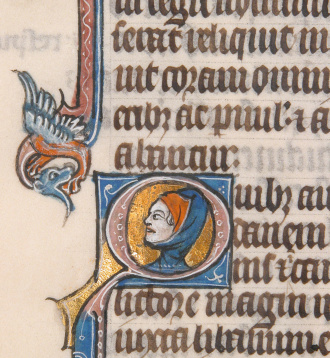Each Bible translation listing is also followed by the text basis used for both the Old and New Testaments, the techniques utilized to convert the words into English, and finally background information about each translation.
American Standard Version Bible
(1901, ASV)
Text basis for Old Testament (O.T.): Masoretic Text (Septuagint influence).
Text basis for New Testament (N.T.): Westcott and Hort (1881), Tregelles (1857)
Translation Technique used: Formal Equivalence
The language used for this version of Scripture was Elizabethan English. This version never achieved the wide popularity of the KJV or other versions.
Contemporary English Version Bible
(1995, CEV)
The CEV translation is a simplified version of the scriptures written at a fourth grade (10 year old) reading level. It uses gender-neutral language for humanity but not for God.

English Standard Version Bible
(2001, ESV)
Text basis for O.T. : Biblia Hebraica Stuttgartensia (B.H.S.) with Septuagint
Text basis for Apocrypha: Göttingen and Ralf Septuagint, Stuttgart Vulgate
Text basis for N.T. : Nestle-Aland N.T.G. 27th edition.
Translation Technique used: Formal Equivalence
The ESV is a revision of the Revised Standard Version (1971). The ESV itself was revised in 2007 and 2011. In 2009, a version was released that included the non-inspired books of the Apocrypha.
Holman Christian Standard Bible
(2004, HCSB)
Text basis for O.T. : B.H.S. 5th edition with Septuagint influence.
Text basis for N.T. : Nestle-Aland N.T.G. 27th edition, United Bible Societies' Greek New Testament, 4th corrected edition
Technique used: Mix of Dynamic and Formal Equivalence
The HCSB is the work of one hundred men and women representing seventeen different denominations.
Holy Bible in Its Original Order - A Faithful Version,
Second Edition (2009, HBFV)
Text basis for O.T. : Ben Asher Masoretic Hebrew Text
Text basis for N.T. : Stephens Greek Text of 1550 A.D.
Technique used: Formal Equivalence
The HBFV is one of the only known modern translation that uses the original inspired canonical manuscript order to arrange the books. According to its translator, the HBFV reflects the true meaning of the original Hebrew and Greek text and shows the unity of Scripture between the Old and New Testaments.
King James Version Bible
(1611, KJV)
Text basis for O.T. : Masoretic Text
Text basis for N.T. : Textus Receptus
Translation Technique used: Formal Equivalence
The KJV is also known as the Authorized Version (AV) or King James Version. This was commissioned by King James I of England (born 1566 A.D., died 1625). Forty-seven scholars from the Church of England worked on this version of God's word. Though four hundred years old, the KJV still remains one of the most popular versions of God's word sold.
Living Bible
(1971, TLB)
Text basis for O.T. / N.T.: Paraphrase of American Standard Version (ASV)
Type: Paraphrase
This version was created by Kenneth N. Taylor. It was one of the best selling copies of Scriptural text in the early 1970s. In the late 1980s Taylor and Tyndale House Publishers invited a team of ninety Greek and Hebrew scholars to participate in a project of revising the Living Bible text. The result of their work was the NLT.
New American Bible
(1970, NAB)
Text basis for O.T. : Primarily B.H.S. influenced by Dead Sea Scrolls along with Septuagint.
Text basis for Apocrypha: Primarily Septuagint with Vulgate and Dead Sea Scrolls influence.
Text basis for N.T. : N.T.G. 25th edition.
Technique used: Formal Equivalence
The NAB had its beginnings in the Confraternity, which began to be translated from the original languages in 1948. It was specifically translated into English by the Confraternity of Christian Doctrine under the liturgical principles and reforms of the Second Vatican Council (1962 - 1965).
New American Standard Bible
(1971, NASB)
Text basis for O.T. : Primarily B.H.S. with influences from the Septuagint.
Text basis for N.T. : N.T.G. .
Technique used: Formal Equivalence
This translation is considered a literal and conservative revision of the ASV of 1901.
New International Version Bible
(1978, NIV)
Text basis for O.T. : Biblia Hebraica Masoretic Hebrew Text, Dead Sea Scrolls, Samaritan Pentateuch, Latin Vulgate, Aramaic Targums, others
Text basis for N.T. : United Bible Societies' Koine Greek editions, Nestle-Aland N.T.G. (based on Westcott-Hort, Weiss and Tischendorf, 1862)
Translation Technique used: Mix of Dynamic and Formal Equivalence
The NIV is one of the most popular Scriptural translations in English. At least fifteen scholars made up the core team that produced the NIV, with additional scholars from various denominations around the world also participating.
New Jerusalem Bible
(1985, NJB)
Text basis for O.T. : B.H.S. with Septuagint influence.
Text basis for Apocrypha: Septuagint with Vulgate influence.
Text basis for N.T. : N.T.G.
Technique used: Dynamic Equivalence
The NJB was created by the Roman Catholic Church as an updated version of the JB. Like the JB, the NJB translates God's name in the Old Testament (the Tetragrammaton) as Yahweh.
New King James Version Bible
(1982, NKJV)
Text basis for O.T. : Masoretic Text. Some influence from Septuagint.
Text basis for N.T. : Textus Receptus.
Translation Technique used: Formal Equivalence
The NKJV is a conservative revision of the King James that does not make any alterations on the basis of a revised Greek or Hebrew text, but adheres to the readings presumed to underlie the KJV.
New Revised Standard Version Bible
(1989, NRSV)
Text basis for Old Testament : B.H.S. Also has influence of Septuagint and the Dead Sea Scrolls.
Text basis for Apocrypha: Septuagint. Has influence of Vulgate.
Text basis for New Testament: N.T.G. 27th edition.
Translation Technique used: Formal Equivalence
The NRSV is a thorough revision of the Revised Standard Version of 1952. This translation is less literal than the RSV due to the goal of making the English easier to understand. Some editions of the NRSV Bible contain the Apocrypha.